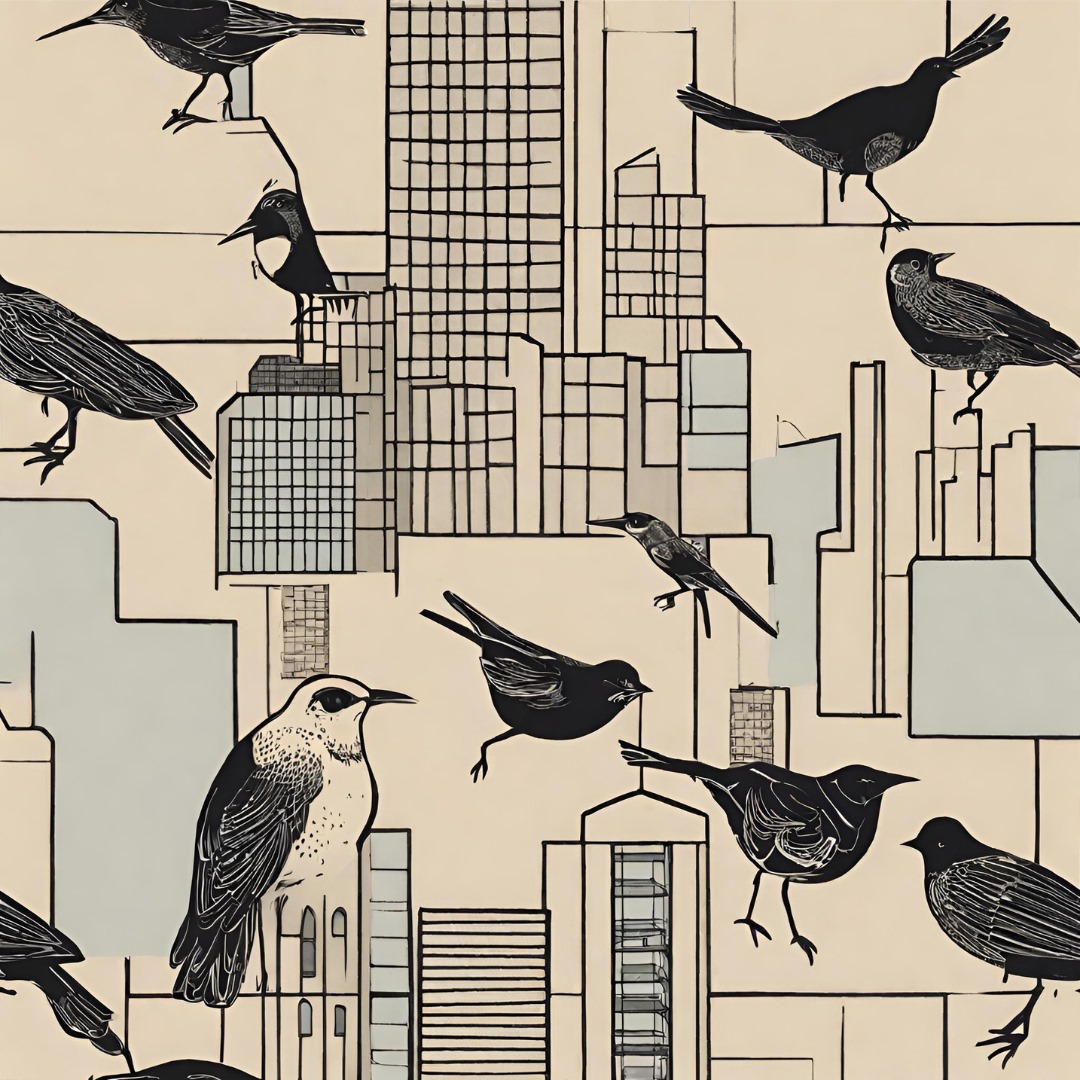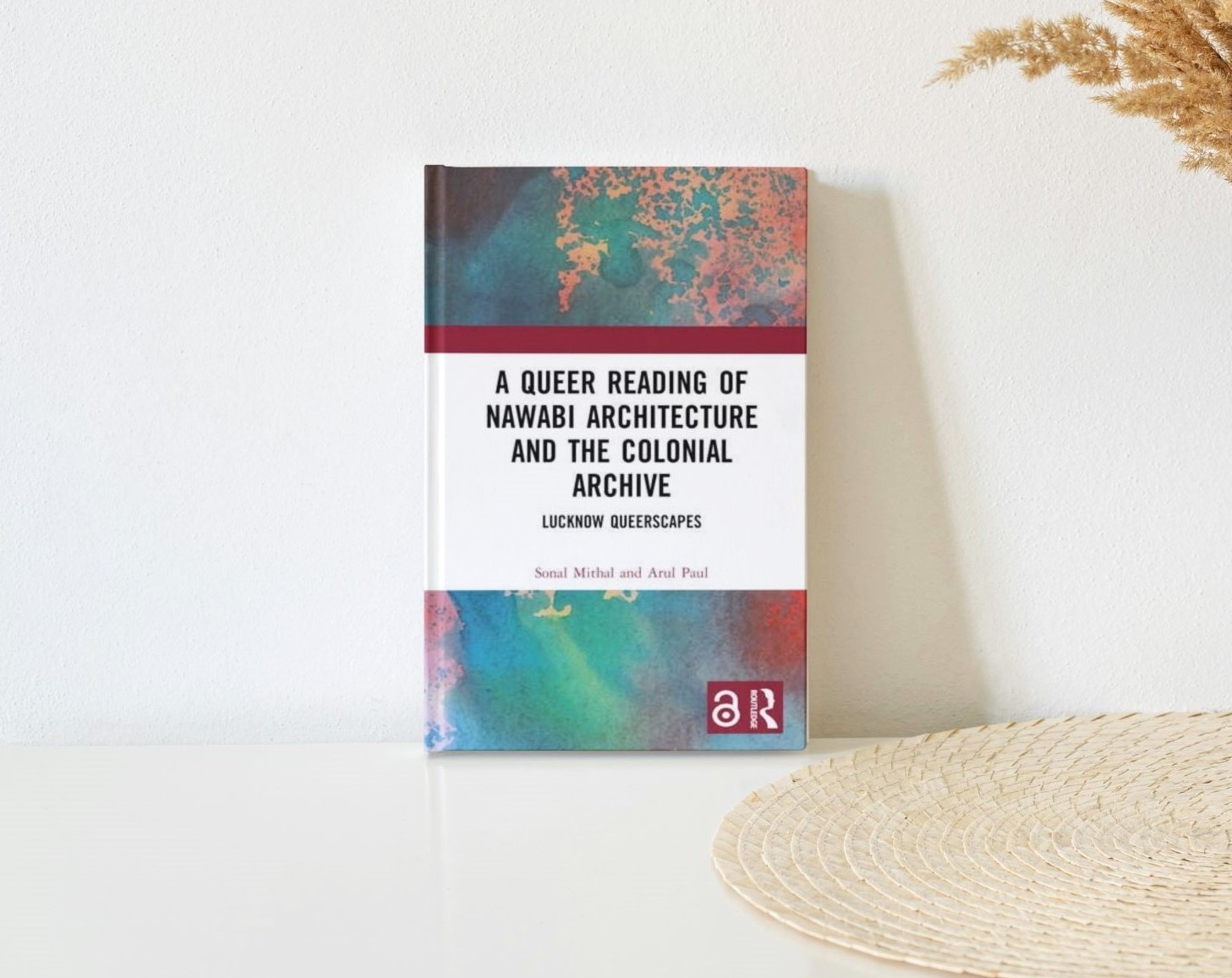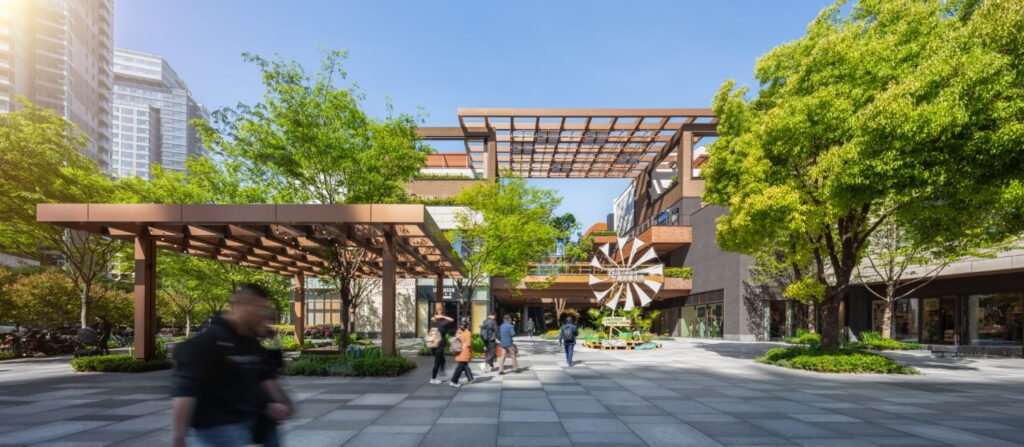
Shui On Lands’s Tiandi flagship commercial developments are all different in terms of characteristics and experiential themes, altogether constituting the diverse urban commercial culture of Shanghai. During the last decade since the opening of Ruihong Tiandi Moon Bay, Hongkou district has undergone large-scale urbanization and renewal. Behind the escalating housing prices, the area has seen an incremental inflow of more affluent residents, bringing significant paradigm shifts in local community lifestyles in recent years.
The design upgrades the community-based commercial project through a micro-regeneration approach. The completed Phase 1 the commercial street of Shanghai Moon Bay Neighbourhood has already seen positive transformations in active neighbourhood participation, becoming a local lifestyle hotspot.

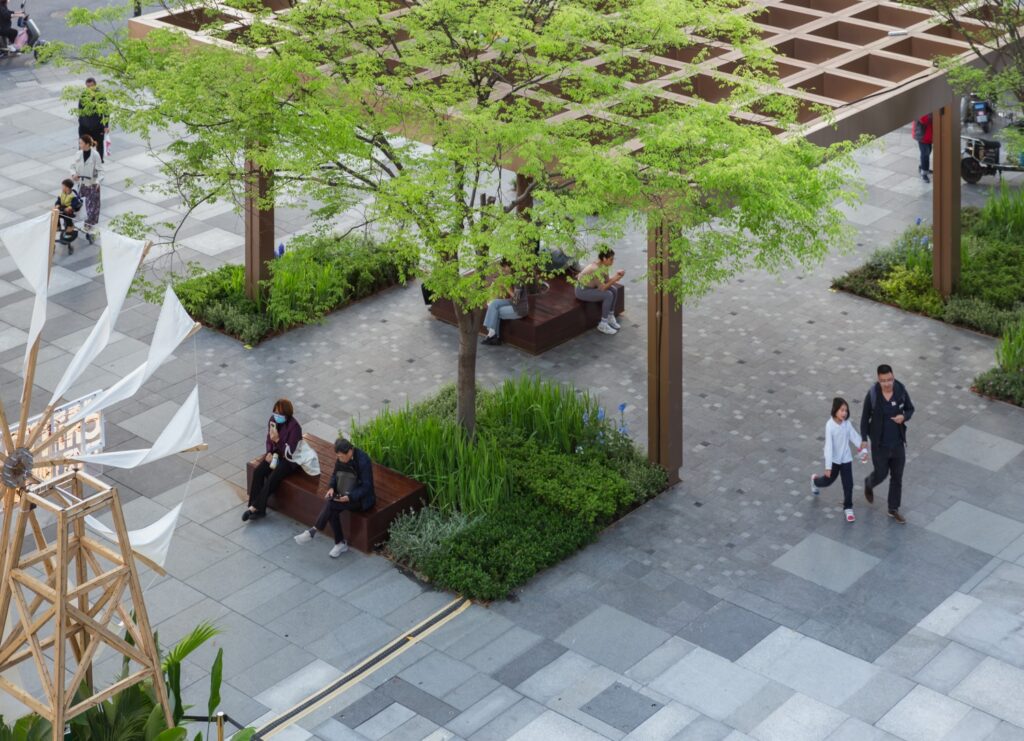
How To Let Commercial Development Sustainably Grow In An Era Of Rapid Change?
Micro-regeneration Practices Of Community-based Commercial
Ruihong Tiandi Moon Bay is located in Shanghai, a mega-city in China with constant transformation. Nowadays in cities like Shanghai, urban development has transitioned into a new model of “renewal” instead of the past model of“expansion”. The commercial landscape has undergone rapid readjustments in the aspect of business operation shifts, gradually driving consumerism trends in all aspects of civic life. Neighbourhood commercials with a small radius but rich experiences are becoming centres of urban community life.
Renovation should focus on resonance through sensorial empathy, and should not stop at “newness” in the appearance.
Before the renovation, the neighbourhood commercial street of Moon Bay has lost its charm and competitiveness. The space was dull, and the experiences became rigid. It was unattractive to local residents in the neighbourhood, especially to those increasingly affluent residents who had aspirations for a better quality of life. However, large-scale renovation would easily alienate those who already have existing affiliations with the community and, therefore difficult to resonate with the locals at the emotional level.
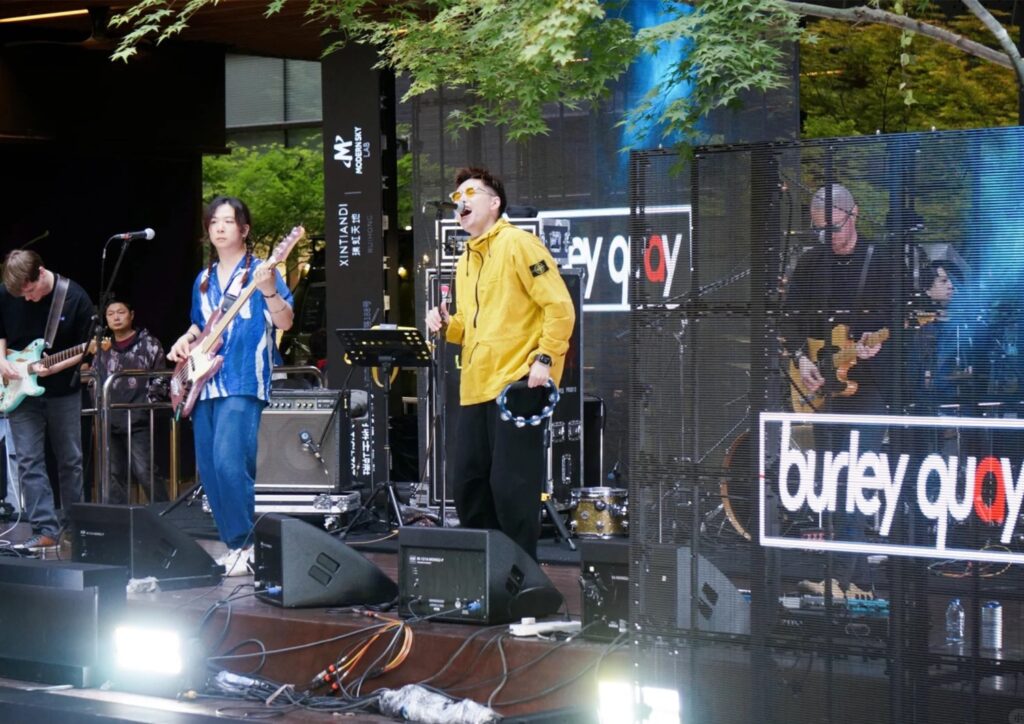

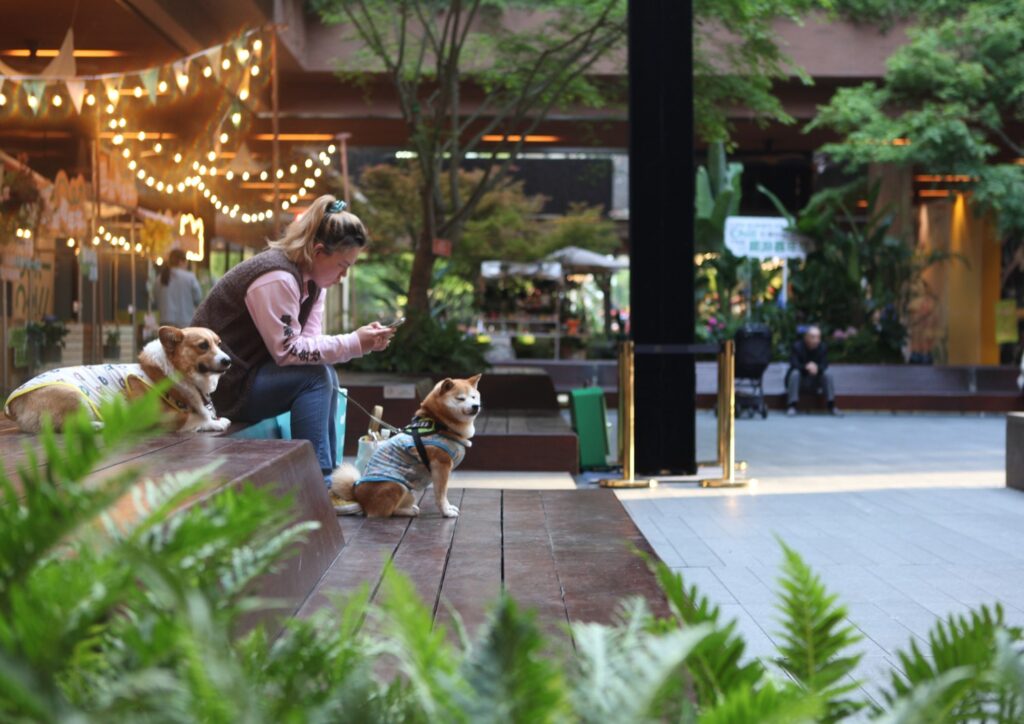
Problems Before Renovation
Problem 1: Front plaza discourages participation, and is alienated from the neighborhood.
Problem 2: Commercial street entry is blocked visually, and appears to be derelict.
Problem 3: Central plaza looks empty, and lacks spatial character and quality.
Problem 4: Greenspace is dysfunctional without integration with the commercial realm
We believe a renovation of community-based commercial should be able to resonate and grow with the local residents. Such resonance comes from considerations of sensorial empathy in place-making, rather than a renewal merely at the visual appearance. We hope to deviate from the traditional approach of visual transformation and turn to a micro-regeneration philosophy to both regenerate and preserve, creating a sense of companionship socially and emotionally. By doing so, we can shape the integratedness of values in the public realm which is allowed to evolve through time.
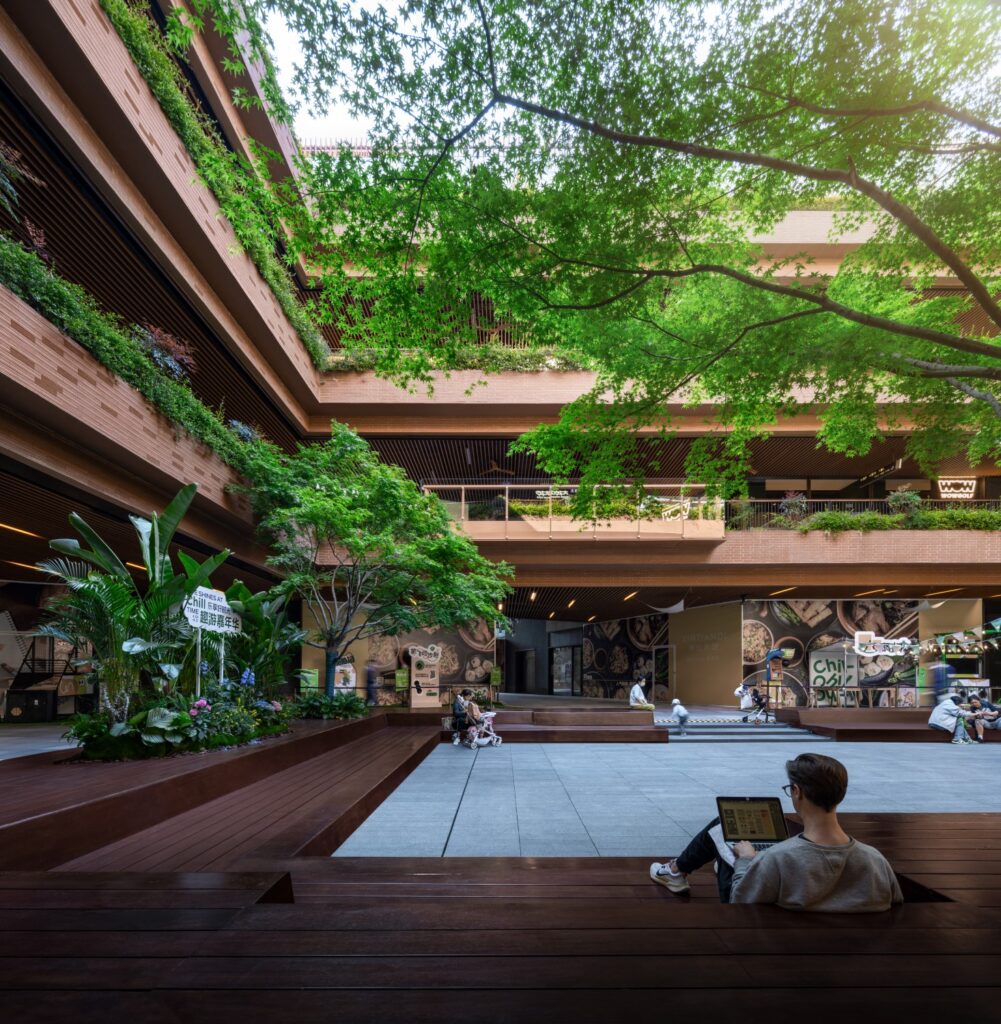
Is There A “New” Possibility For Flagship Tiandi Developments?
Sense Of Belonging In The “Garden Village”
In comparison with Ruihong Tiandi Sun Palace, the conventional mall that is directly adjacent to Moon Bay, the project is characterized by its open network of neighbourhood commercial streets. At the beginning of the project, we conducted a research on Shui On Land’s existing flagship commercial developments in Shanghai in order to uncover the unique DNA for Moon Bay. Shanghai Xintiandi celebrates Shikumen culture and cosmopolitan lifestyle; Hongshoufang celebrates the reminiscence of Shanghai’s traditional alleyway bustle; Panlong Tiandi celebrates traditional water town for vacation getaway; and Ruihong Tiandi Sun Palace, which is adjacent to Moon Bay, celebrates communal gathering at the vertical village inside the atrium. Behind these successful projects, they all have a unique brand of “sense of belonging”that is exclusive, and in one way or another, native to the city of Shanghai.
Moon Bay’s commercial streetscape is cramped, multi-directional, and lacks appropriate space for activities. At the same time, we discovered that such spatial characteristics have an ingenious commonality with “traditional village” that can be used to our advantage when creating village-like social experiences. Through regeneration and preservation, our “Garden Village”concept begins to shape the sensorial place-making of the community-based commercial realm. We envisioned transcendence from “spatial experiences” to “cognitive experiences”, and ultimately elevating the biophysical, cultural, and social values of the project.
“The Breath Of Spring In Garden Village Is The Longing Desire In Everyone’s Heart And Soul.”
A village is where social life blends and manifests. Unlike Sun Palace’s large-scale place-making, we shift our focus to creating cognitive “intimacy and warmth”that can host a variety of social lifestyles in an open community. We want it to be a community-centric thermometer, maintaining the right balance between “new” and “old”. Existing elements such as sculpture, pavage, water feature and trees should also be preserved if possible.
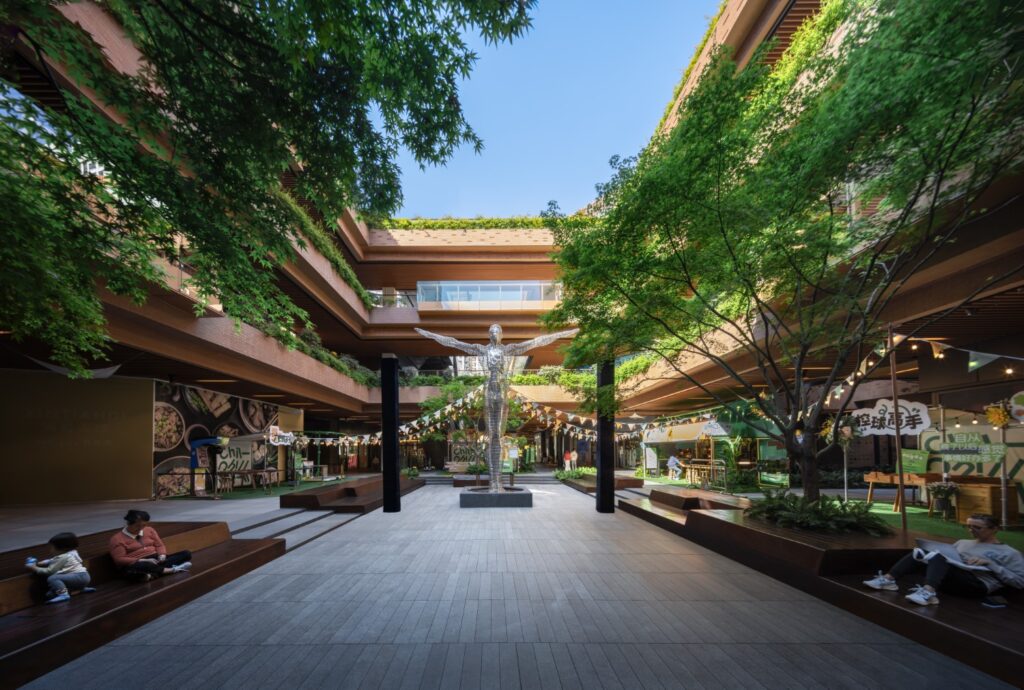
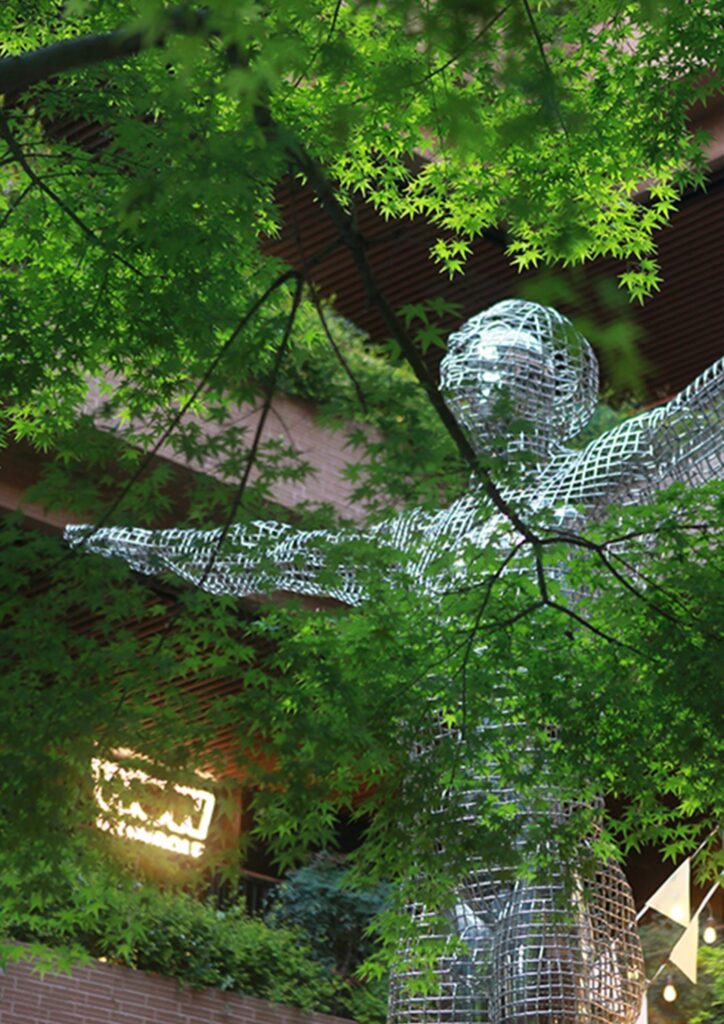
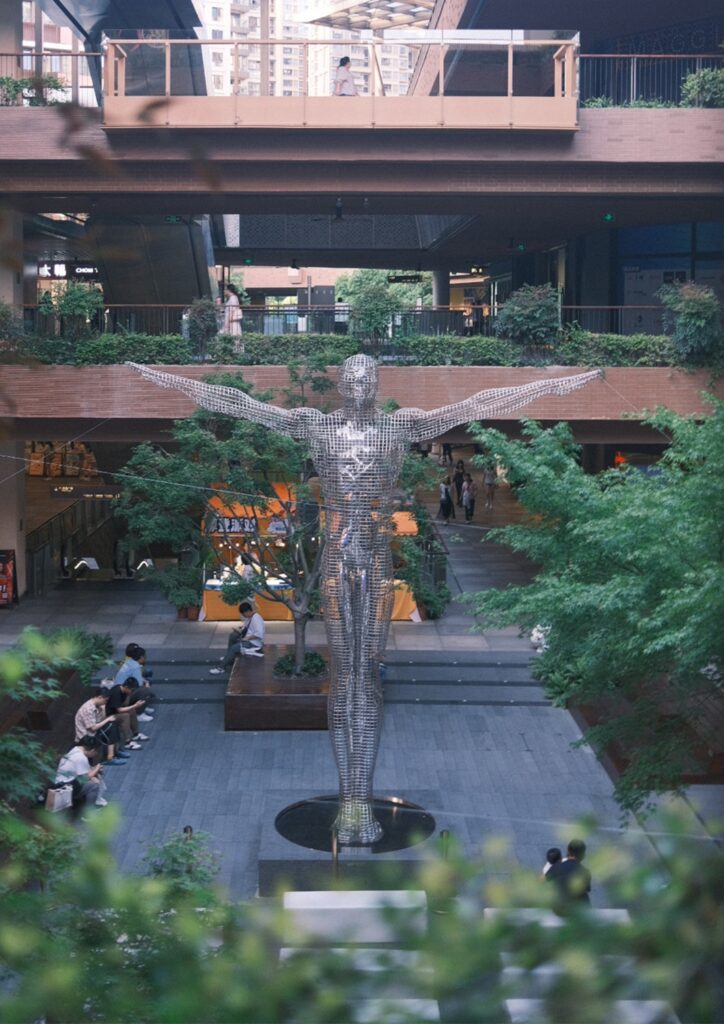
How Can We Integrate Social Life Into The Garden Village?
Rationality And Sensibility In The Making Of Cognitive Commercial Realm
During the design process, the team interacted closely with the client, integrating future businesses into the consideration of spatial character zoning. The design team envisioned a socially-integrated commercial realm without clear boundaries between indoor and outdoor. Based on the distribution of future businesses and brands, we strategized a garden village with “organic lifestyle integration”, differentiating brands into various lifestyle scenes, and making efficient use of available outdoor space for integrated public life.
“Lifestyles can be ubiquitous when the boundaries are dissolved.”
The design of the landscape classified streets into “lifestyle scenes”. Those different lifestyle-themed zones have varying garden characteristics and textures, and the design allows businesses and brands to voice their manifestos and lifestyle concepts in the outdoor environment, truly integrating vibrant lifestyles into a village-like community.
Moon Bay after the renovation has seen a significant improvement in cognitive experiences and is also far more integrated commercially with the community vibe. The sense of belonging in the cognitive garden village manifests itself as an organic living community that will continue to grow over time.
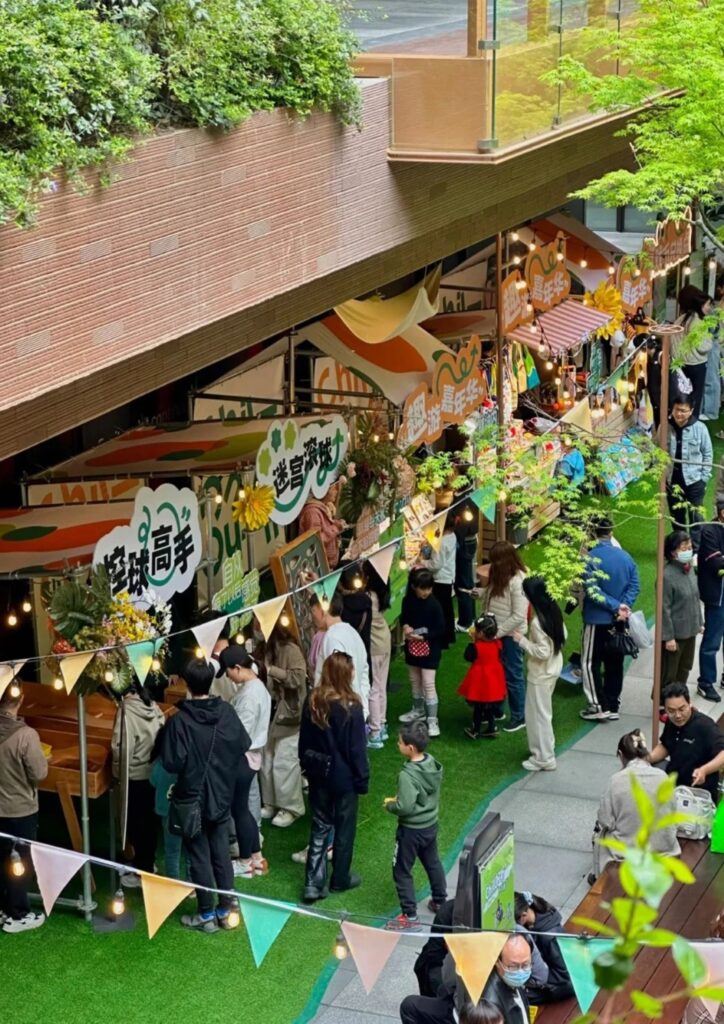
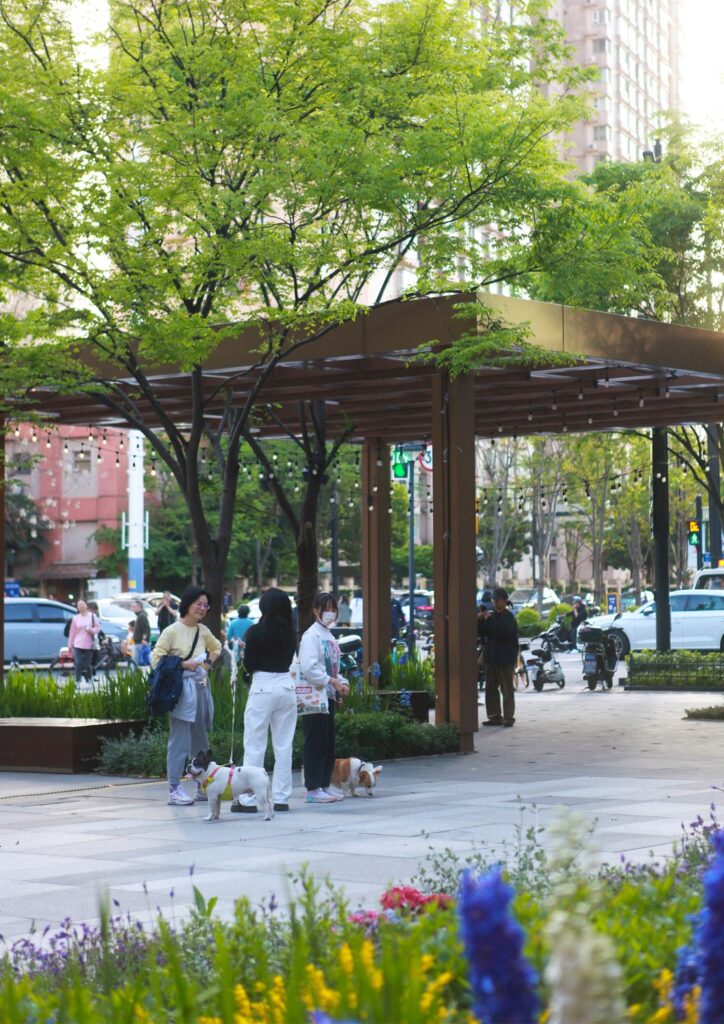
How Many Gardens Have We Designed Into a 2,700 sqm Street Block?
An Urban Living Room, And Also A Back Garden For The Community
Phase 1 of landscape renovation covers an area of only 2,700 sqm, and our design of small-scale geometric gardens harmoniously blends in with the overall form of the architecture, creating a renewed public realm with a great sense of warmth and belonging. Seven themed gardens are placed within the street block to create rich garden village experiences.
Parlor Garden In Front Of The Village
Situated at the street corner between Moon Bay commercial streets and the surrounding communities, the Parlor Garden acts as a front plaza for community displays and informal gatherings. The 100 sqm parlour space with a shade structure located adjacent to the plaza integrates seating and vegetation for sheltered gathering under the tree canopy. There is a flexible display area at the entry, which can also be used for community or cultural activities such as markets, pop-ups and art installations. The Parlor Garden has become a social gathering hotspot with integrated neighbourhood vibes.
The landscape at the Parlor Garden is filled with leafy plants such as Pennisetum alopecuroides, Buxus megistophylla Levl., and Viburnum macrocephalum, creating a refreshing and natural atmosphere. The composition of Forest green and Binzhou green granite pavers in different scales form a pixellated geometric carpet under the shade structure, forming a neighbourhood parlour that is dynamic under natural sunlight.
Blossom Garden At The Village Entry
Facing the street corner, the Blossom Garden acts as the gateway into the garden village that welcomes incoming guests. The garden is composed of 30% evergreen groundcover and 70% floral plants, creating a romanticized garden identity full of fragrance while conveying the spirit of the village garden community.
The design selects seasonal flowering species according to the four seasons and will display varying floral scenes all year round. Starting from springtime, Lobelia chinensis, Scabiosa comosa, Glandularia × hybrida, and Lavandula angustifolia begin to blossom, followed by Lupinus polyphyllus, Hydrangea macrophylla, Delphinium grandiflorum L, Salvia leucantha, and Eupatorium cannabinum L, bringing vibrant vibes to the garden.
Lawn Garden Under The Camphor
The Lawn Garden is separated from the Blossom garden by a 4 m footpath and will be mainly used as a camping installation scene for outdoor lifestyle brand displays in the future. The design preserved the rounded stepping stones and a large camphor tree that has existed for many years. The flexible open lawn with the leafy camphor tree in the middle creates a leisurely open space for people to gather freely.
Maple Garden Next To The Cliff
Located on the side of the escalator and the boutique shop, the Maple Garden enjoys natural sunlight from above. Integrated with the shop, the garden feels quiet and exclusive. We created an intimate outdoor resting pocket for shop visitors.
Although the space is small, the design still manages to create a richness of cognitive experiences through dozens of 1m x 1m geometric plant modules to compose the Maple Garden. Evergreen woody plants and herbaceous ground cover create detailed and delicate textures. The maples are exquisite in scale, and visitors can rest on the wooden seating benches hidden among the secret garden greenery.
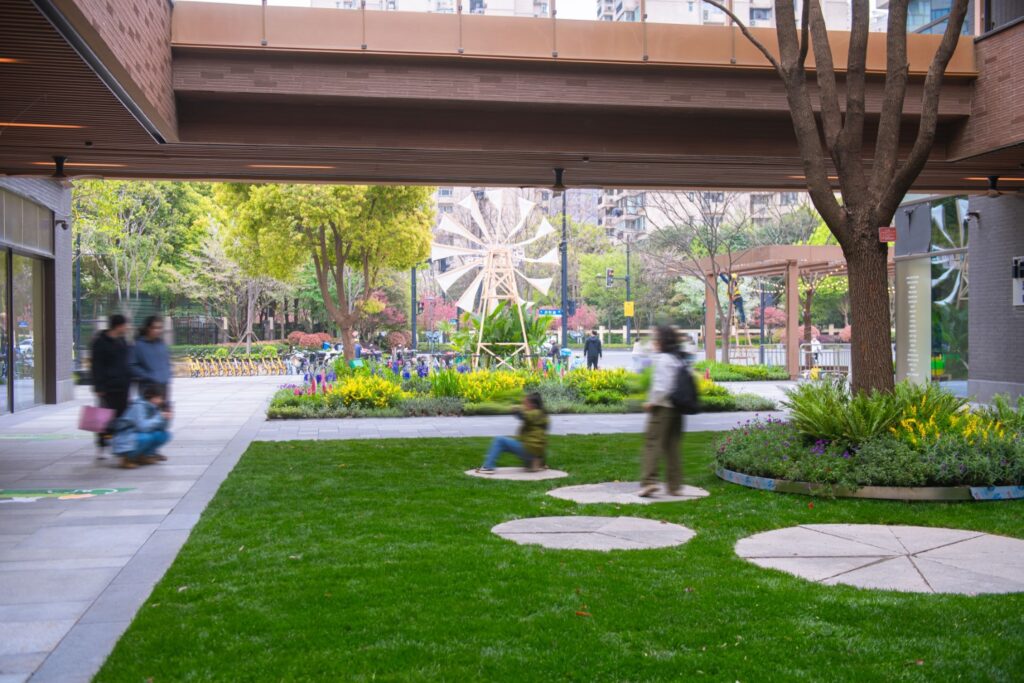
Forest Garden At The Bonfire Grounds
The Forest Garden is the visual and spiritual centre of Phase 1 Moon Bay renovation, and it acts as a performance-oriented gathering space. The design team transforms the space into a 200 sqm sunken plaza with a slightly terraced inward-facing configuration. The spatial layout consists of a stage performance area, spectator seating area and stepped passage area. The relocated art sculpture in the centre strengthens the theme of healing and identity of the space, becoming a feature photo spot with performances that are also regularly held here.
The terraced seating is composed of multiple modular configurations in a staggered formal layout, forming flexible plaza edges for a multiplicity of uses. The Forest Garden uses Asplenium nidus L. and Farfugium japonicum as the main species. With the use of Fuding black stone pavers, the immersive experience conveys a sense of healing that is both relaxed and cosy.
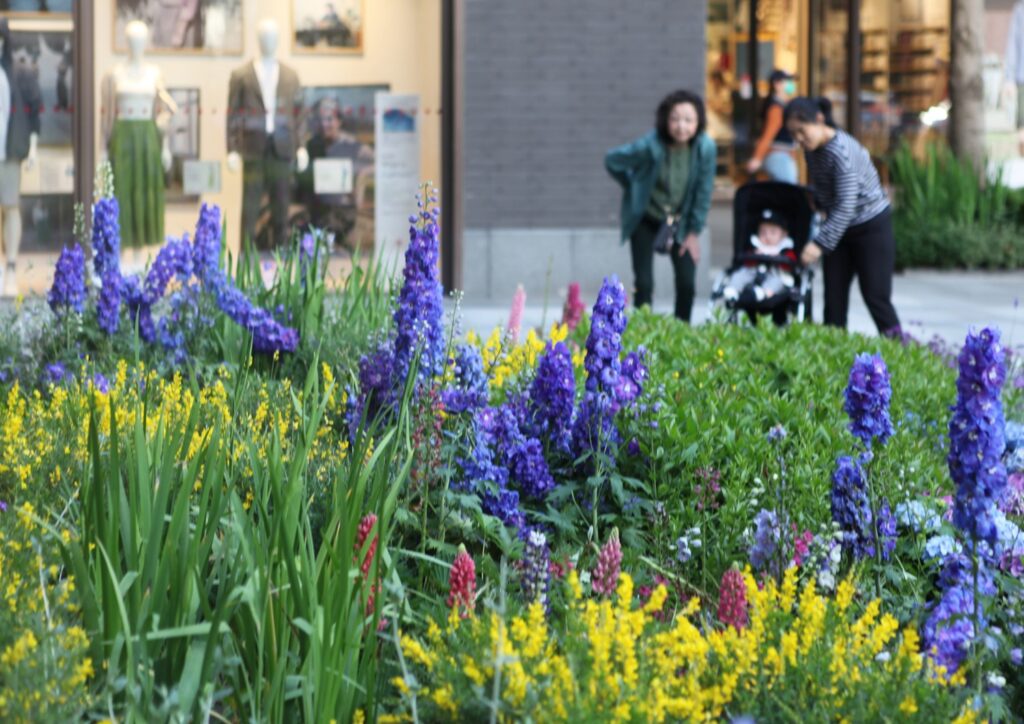
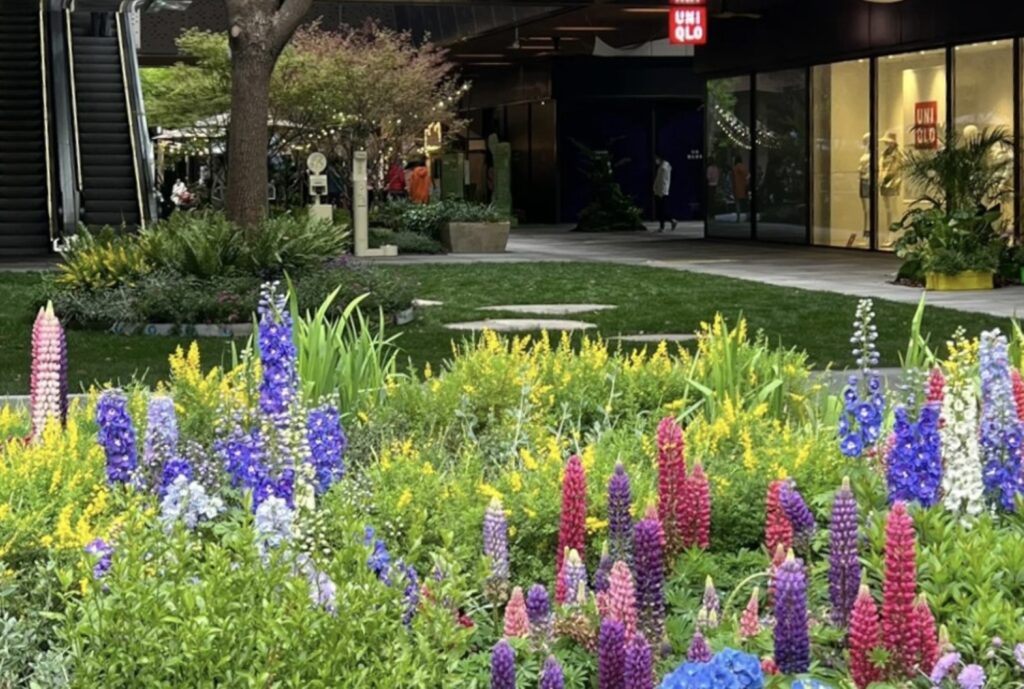
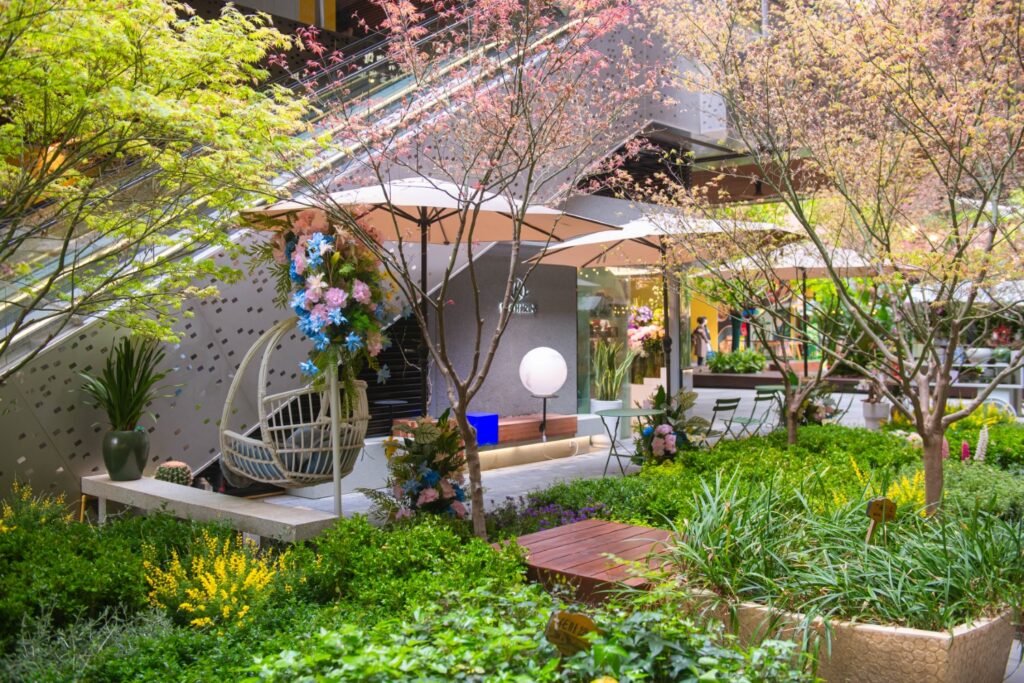
Woody Garden In The Tranquil Alley
Located in the alley on the side of the Maple Garden, the Woody Garden has a quieter atmosphere and will be transformed into a dining area with F&B businesses in the future. Passages that are 3m wide are along the facade on both sides, and we have embedded pocket outdoor dining spaces within the garden.

Fern Garden Within The Secret Creek
The Fern Garden adjacent to the existing water feature will also be an alley outdoor dining area in the future. The atmosphere is tranquil and surrounded by sounds of water. Spill-out pocket spaces for dining are embedded within creek-themed vegetation like Asplenium nidus L. and Dryopteris erythrosora ‘Brilliance’.
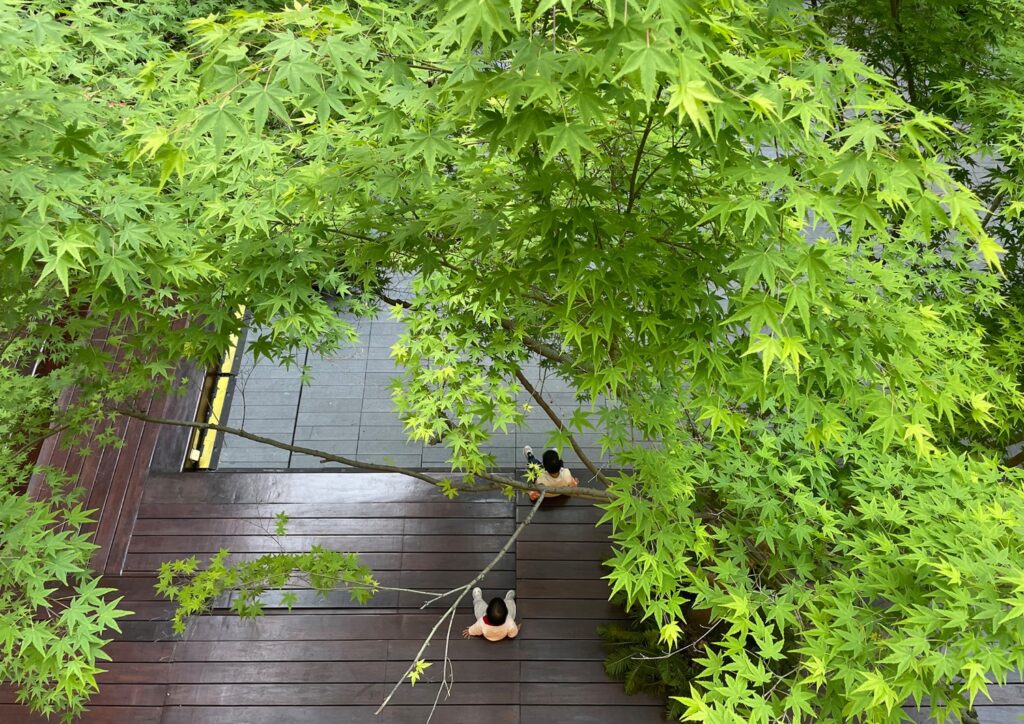
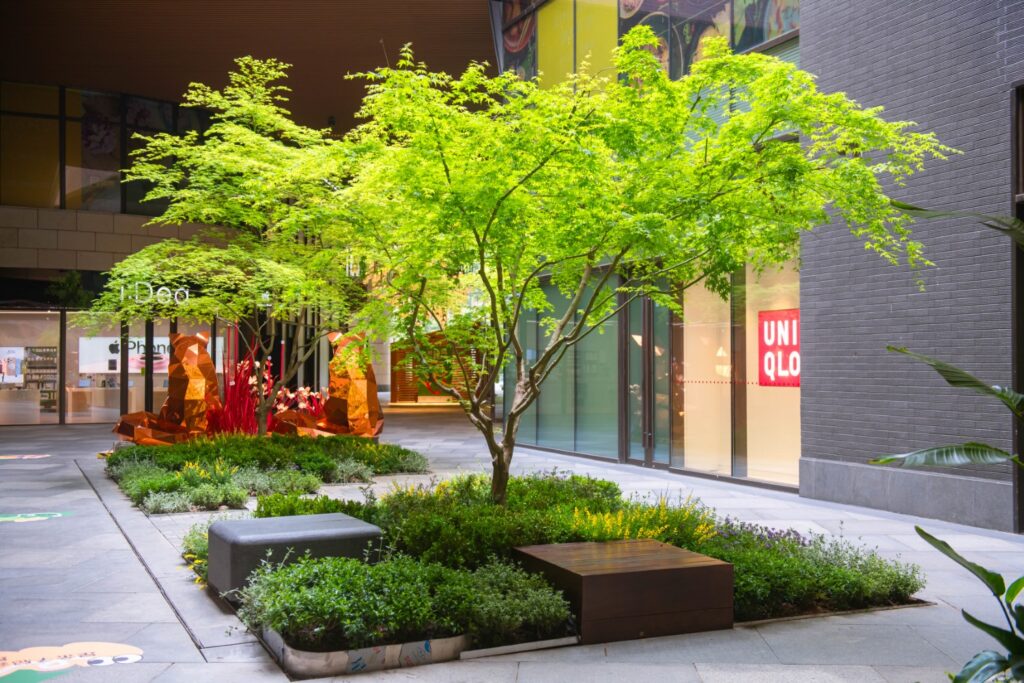
The New Old or The Old New?
Regeneration Through Preservation
During the design process of our micro-regeneration, we preserved and re-used existing elements as much as possible such as the sculpture, rounded stepping stone, water feature and street pavage. Existing mature trees such as zelkova, maple and camphor trees were also kept. On the basis of the “cognitive” transformation of a garden village, our attitude of regeneration through preservation is vital in creating empathy and resonance with the community, striving to achieve the right balance of “new” and “old” through a particular emphasis on cognitive spatial qualities.
Ruihong Tiandi Moon Bay after the micro-regeneration will still be a community-based commercial center that residents already have affinity with. Our approach of renewal is not only about being “new” in appearance but more importantly being “new” in the cognitive aspect of the overall gardenesque experience. The renovated “Xin”tiandi is a place where old and new co-exist, and lively memories belonging to locals can continue to blend and evolve over time in the garden village that is constantly full of life and surprises.
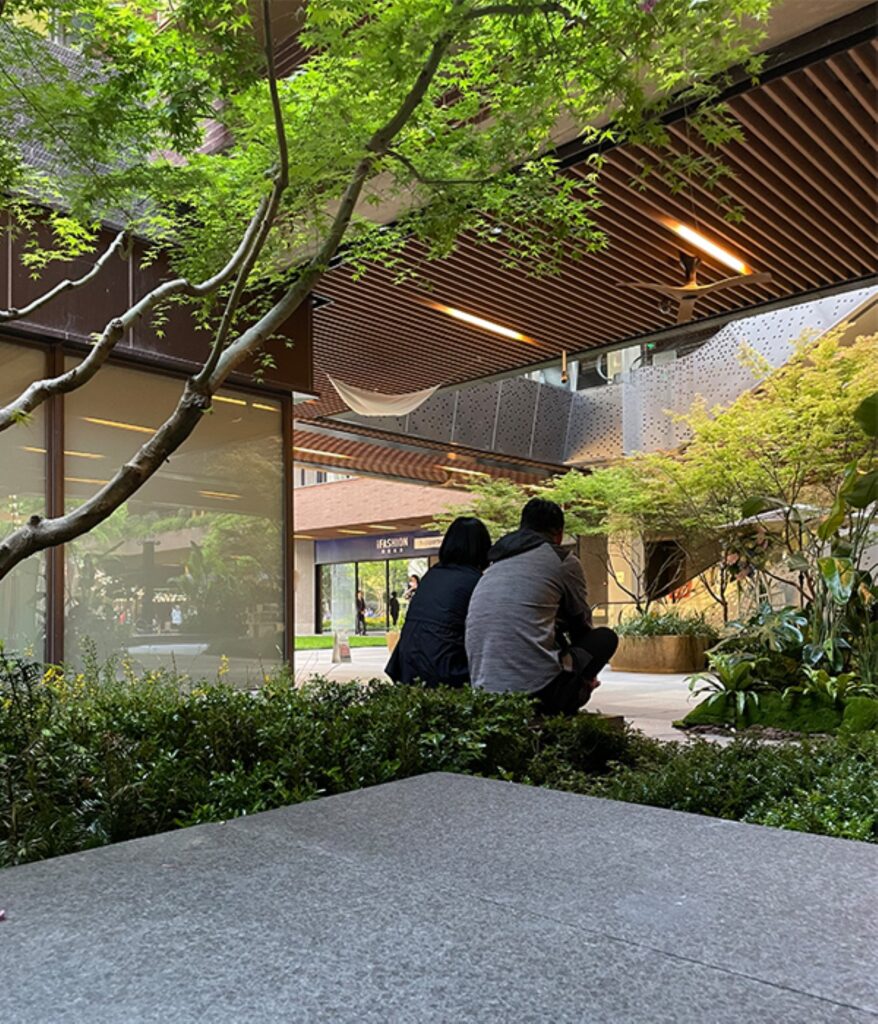
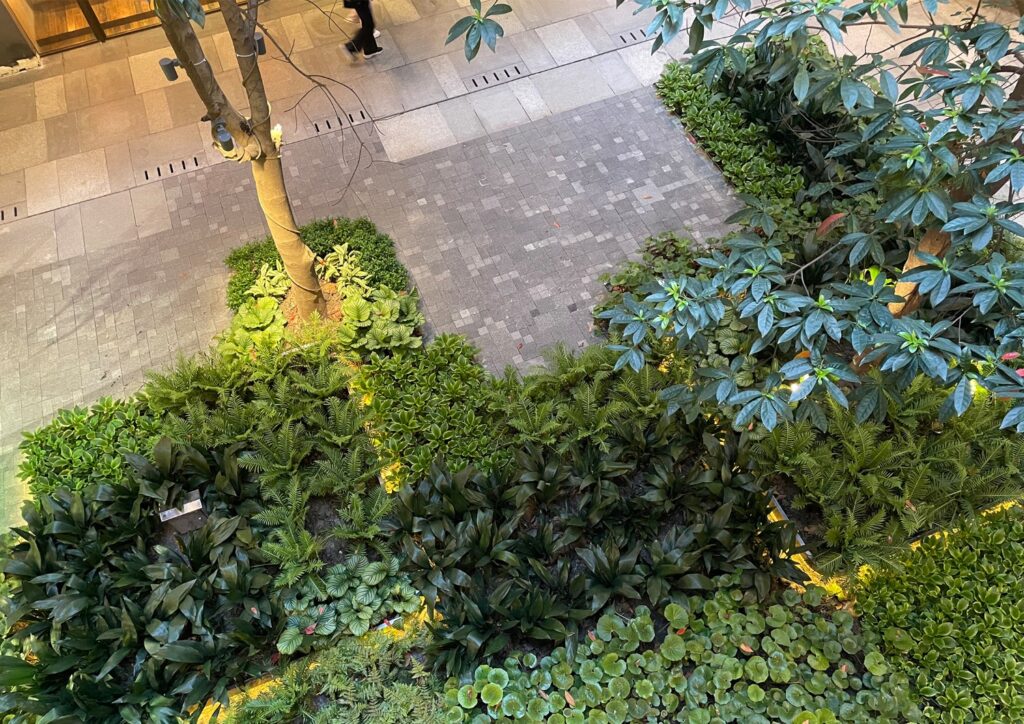
To Be Continue-ed
The design of Ruihong Tiandi Moon Bay showcases the designer’s understanding of the community’s commercial experience of everyday life. We believe that in the era of “renewal”, micro-regeneration that switches from “formal transformation” to “qualitative change” will receive more and more attention, and such practices will pave the way for the ideology and mindset of next-generation commercial designs.
The cognitive-driven approach of Moon Bay reconstructs and optimizes the empathetic environment of the public realm, and sustainably guides the gradual restoration of public community life. The renovation is still ongoing. We trust in the transformative process and look forward to final project completion in the near future.
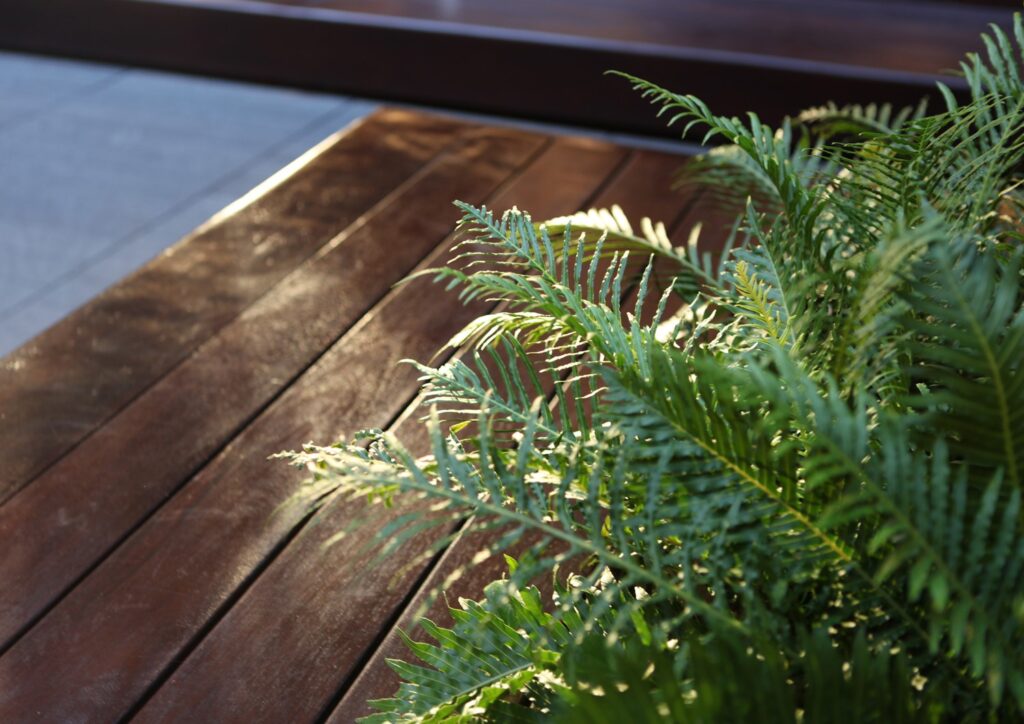

Project Drawings:

Project Details:
Name: Shanghai Moon Bay Neighbourhood Commercial Street Renovation Phase 1
Location: Shanghai
Status: Completed (Phase 1: June 2023 – March 2024)
Typology: Urban Design (Neighbourhood Commercial Street)
Landscape Area:2750 sq.m(Phase 1)
Landscape Design: FLO Landscape Design (Shanghai) Co. Limited
Team: Kai Fu, Yayun Ni, Shenghao Wu, Jie Yu, Kuizhi Li, Yexiu Hu, Qiuye Ma, Luhui Xiong, Kun Liu, Yanyan Shi, Junqiao Liu, Song Wu, Bingyi Wang
Architecture Renovation: SHUISHI
Photographs: SHUISHI, FLO Landscape Design (Shanghai) Co. Limited, Wei Ou





